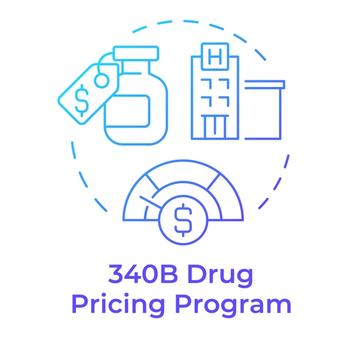
FDA Approves Label Expansion for Oxlumo
This approval for Oxlumo adds lowering plasma oxalate levels for patients with primary hyperoxaluria type 1, a rare and life-threatening metabolic disease.
The FDA has
Oxlumo is an RNAi therapeutic administered via subcutaneous injection and is indicated to lower plasma oxalate levels and urinary oxalate levels in pediatric and adult patients. This approval adds lowering plasma oxalate levels to the indication. The therapy harnesses RNA interference, a natural cellular process of gene silencing.
“The significance of the label expansion of Oxlumo cannot be overstated, as this milestone provides crucial reassurance among a patient population with the highest unmet need, as well as their caregivers and loved ones, that Oxlumo is available in the US for patients living with PH1, including those with advanced disease,” Kim Hollander, executive director of the Oxalosis and Hyperoxaluria Foundation, said in a press release.
The approval is based on results of the ILLUMINATE-C phase 3 study in patients with severe renal impairment, including those on hemodialysis. In the trial, Oxlumo resulted in reductions in plasma oxalate levels and demonstrated an encouraging safety and tolerability profile in patients with compromised renal function, including those with kidney failure and undergoing treatment by hemodialysis. Elevated plasma oxalate levels result in systemic deposition of oxalate outside of the kidneys, potentially leading to bone fractures, cardiomyopathy, impaired erythropoiesis, vision loss, skin ulcers and other serious conditions.
The study assessed both dialysis-independent and -dependent patients. Patients in both cohorts had a reduction in plasma oxalate levels as early as month one. In the arm with six dialysis-independent patients, treatment with Oxlumo led to a 33% least squares mean reduction in plasma oxalate levels from baseline to month six. Least squares is a statistical method for estimating the true value of some quantity. In the arm with 15 hemodialysis-dependent patients, treatment with Oxlumo led to a 42% least squares mean reduction in plasma oxalate levels from baseline to month six.
There were two treatment discontinuations due to adverse events in the extension period of the study, neither of which was drug related. The most common adverse related to therapy was injection-site reaction reported in five of 21 patients (24%), which were all mild and transient.
The supplemental application also includes results from the open-label extensions of the ILLUMINATE-A and ILLUMINATE-B phase 3 studies of pediatric and adult patients with PH1. The label has correspondingly been updated to highlight the maintenance of sustained reductions in urinary oxalate through month 24 and month 12, respectively.
The FDA approved Oxlumo in November 2020 for the treatment of PH1 to lower urinary oxalate levels in pediatric and adult patients.
Newsletter
Get the latest industry news, event updates, and more from Managed healthcare Executive.




